The 182-year-old Christ Church in Byculla will welcome parishioners on Christmas Eve, after a rigorous round 1 of restoration

“You could say that he was a lazy Governor,” chuckles Vikas Dilawari, conservation architect, as he oversees Phase 1 of the restoration work undertaken at Byculla’s Christ Church. Completed in 1833, this Neo-Classical landmark that sits on Clare Road was the brainchild of Governor Monstuart Elphinstone (1819-27).
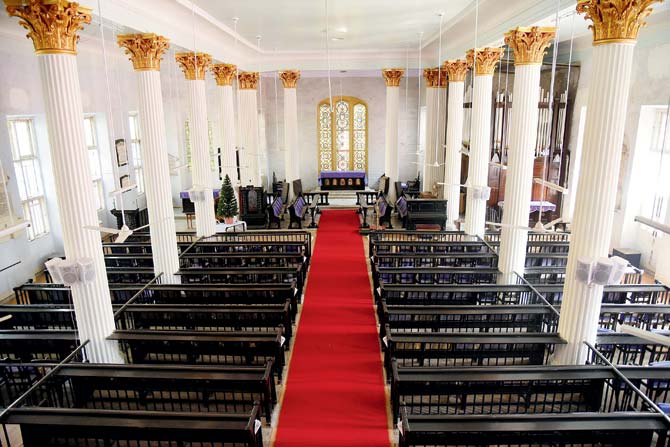
A view from the mezzanine floor. The original lath ceiling plaster, unique to 19th century buildings, was restored using similar materials, perhaps for the first time in Mumbai. The ends of all the wooden trusses had decayed, and were strengthened using structural engineer Kiran Bhavsar’s inputs. The columns were a gift to the church, and were intended for the Town Hall’s Grand Assembly Room. Pics/Suresh KK
Dilawari shares that the Governor was keen to move from the confines of the Fort, and developed Parel as the site for his ‘country home’. “Those days, Parel-Byculla were emerging as ‘It’ locations,” he informs. Once the Governor's mansion was in use, a ‘chapel of ease’ was required, and with Christ Church, the need for the Governor to attend Sunday service all the way at St Thomas Cathedral in Fort was done away with.
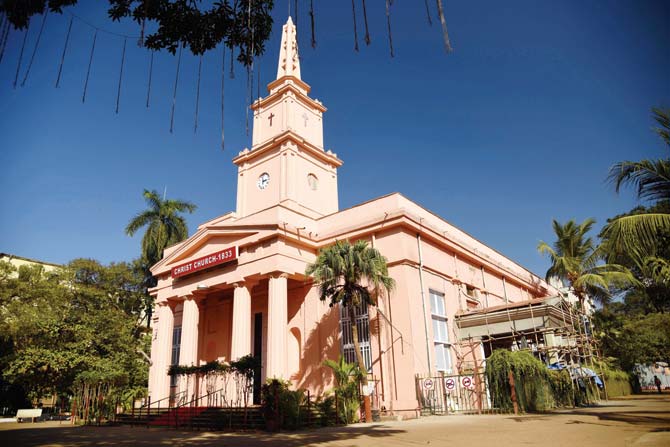 The foundation stone was laid by the Right Honourable Earl of Clare, after whom Clare Road (now Mirza Ghalib Road) was named. The church was opened for worship on August 10, 1833 but was not consecrated until December 1835
The foundation stone was laid by the Right Honourable Earl of Clare, after whom Clare Road (now Mirza Ghalib Road) was named. The church was opened for worship on August 10, 1833 but was not consecrated until December 1835
Since August, Dilawari and his team have been working closely with Christopher Gomes, on behalf of the managing trustees of Christ Church. “For 182 years, no major holistic restoration had been done. By 2013, Vikas had submitted a fabric study report to the new managing trustees, who were keen to bring the church to its former glory. It was unanimously decided that restoration should be done in phases,” reveals Gomes, also an architect.
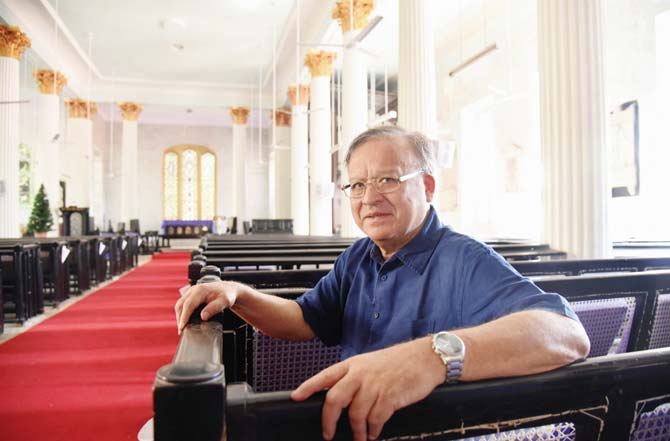
Rudolf Woodman, Chairman of the Managing Trust, Christ Church, Byculla
He and Dilawari worked in tandem on this ambitious project, where Phase 1 included restoration of the false ceiling, repairs of window and cast iron columns. While work was in progress, the South porch had shown signs of distress, and so was also attended to.

The pipe organ, if repaired, will add value to the grandeur. Grey & Davidson, London supplied the organ for £300. It was renovated by S. Rose & Co. in 1914
During a walkthrough of the refurbished interiors, the sense of grandeur and history was overwhelming. From the 12 fluted Corinthian cast-iron columns that were originally meant for the Town Hall, to the stunning stained glass work at the altar to the many tombstones that glorify colonial wartime heroes and administrators of the Company, the resemblance with St Thomas Cathedral in Fort is striking.
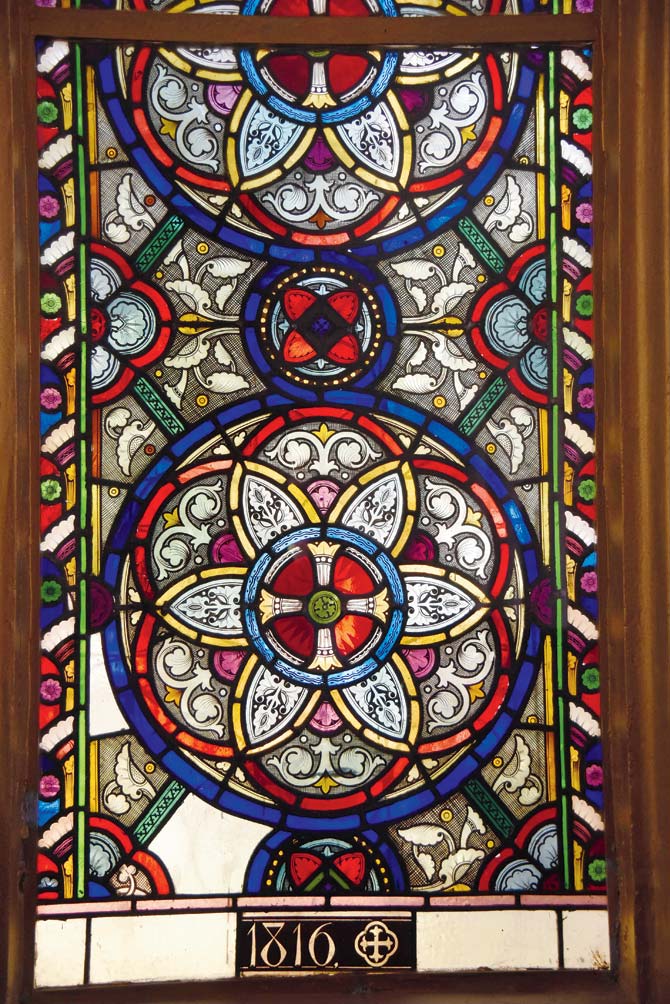
In the centre of the nave are three stained glass lights. These were a gift from Spencer Compton, Prothonotary to the High Court of Bombay, as well as a church trustee. These pre-date the work inside the University buildings at Fort
“We wanted it to be ready by Christmas,” shares Gomes, adding that the stained glass, flooring, internal polishing, external facades and old mouldings will be addressed in Phase 2, which is expected to begin in February 2016.
 The wooden staircase leading up to the balcony. Still in good shape, it is as old as the church. From this mezzanine space, one can get a vantage view of the entire congregation during service. (Information courtesy: Vikas Dilawari, Christopher Gomes and Dr Christopher London)
The wooden staircase leading up to the balcony. Still in good shape, it is as old as the church. From this mezzanine space, one can get a vantage view of the entire congregation during service. (Information courtesy: Vikas Dilawari, Christopher Gomes and Dr Christopher London)
Dilawari believes this church “of parallel vintage to the Town Hall”, is an important reminder of the city’s architectural landscape. “Similar to Church of St Andrews (opposite Lion Gate), it was one of the last of the Neo-Classical churches built in pre-1860s Bombay, after which Gothic became the emergent style,” he explains, as our mind does a quick rewind to Byculla of the 1840s — of horse-ridden carriages, ornate street lamps, umbrella-sporting memsahibs, and a Governor, who was always on time for Sunday mass.
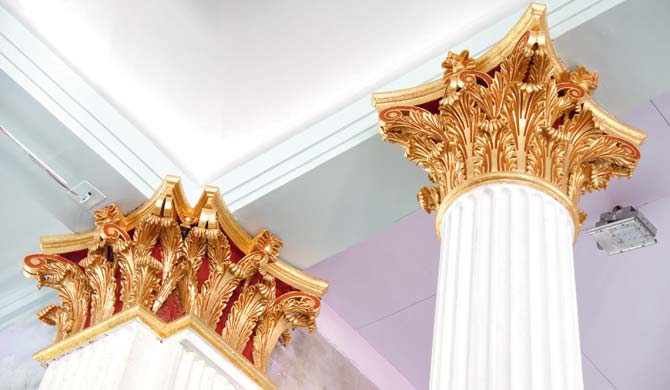
Vasai-based Sequeira Brothers were responsible for the gold gilding works on the capitals that hold the columns together. The four capitals on the altar side were treated with gold leaf work and the rest were treated with pearl gold with shading done by traditional craftsmen from Vasai
 Subscribe today by clicking the link and stay updated with the latest news!" Click here!
Subscribe today by clicking the link and stay updated with the latest news!" Click here!









